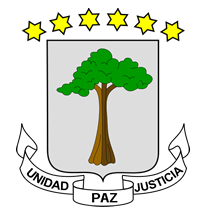Equatorial Guinea: Government
Key Figures
- Chief of State:
- President Teodoro Obiang Nguema Mbasogo
- Head of Government:
- Prime Minister Manuela Roka Botey
Overview
- Government Name:
- Republic of Equatorial Guinea
- Constitution:
- Adopted: 1991; Provides information for the fundamental principles of the state; organization of government; the armed forces, state security, and national defense; and local communities.
- Government Type:
- Republic

Index of Economic Freedom
Country Risk Rating
Government Branches
| Main Powers | Election Process | Election Cycle 1 | |
|---|---|---|---|
| Executive | The president is both the head of state and head of government. It has extensive powers, including naming and dismissing members of the cabinet. It can make laws by decree, dissolve the chamber of representatives, negotiate and ratify treaties, call legislative elections, and act as commander in chief of the armed forces. The prime minister coordinates government activities in areas other than foreign affairs, national defense, and security. |
The president is elected through a plurality vote. The prime minister is appointed by the president. |
7 years |
| Judicial | The president is in charge with his judicial advisers (the supreme court). In descending rank are the appeals courts, chief judges for divisions, and local magistrates. |
Supreme court judges and constitutional court members are appointed by the president. |
5 year terms |
| Legislative | Legislative power is vested in both the government and the chamber of people's representatives (the lower house of the parliament). |
The senate has 55 members elected by plurality vote and 15 members appointed by the president. The house of people's representatives has 100 members elected through a closed-list proportional representation system. |
5 years |
Regional Trade Blocs
International Organization Participation [2]
Environmental Agreements [3]
Tax Information [2]
- Tax Authority:
- Information not available
- Tax Name:
- Information not available
Sources:
- ElectionGuide http://www.electionguide.org/
- EY, http://www.ey.com
- CIA World Factbook, https://www.cia.gov/the-world-factbook/
- U.S. Bilateral Relations Fact Sheets http://www.state.gov/r/pa/ei/bgn/


